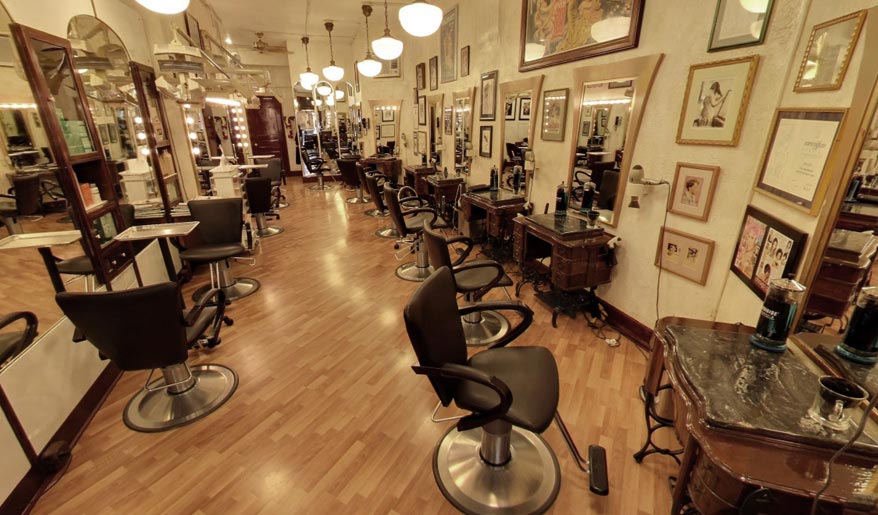Split Shifting: An Avenue to Growth

When salon owners talk about growth, the conversation often centers around expanding their space or opening a new location.
But bigger isn’t always necessarily better. Jerry Gordon the late owner of J. Gordon Designs in Chicago, pioneered the concept of split (or double) shifting in the salon and grew his business around it.
His wife, Karen Gordon, explains, “In the 1980s and ’90s, it seemed like everyone was expanding their salons into multiple locations. But a chain of J. Gordon Designs salons was never Jerry’s vision.”
Instead, Jerry viewed his salon to be like a small, beautiful French restaurant where he could personally oversee the quality of people, products and environment.
But just like a fine French restaurant, Jerry’s salon became very popular and he eventually needed to find a way to expand while staying true to his vision.
Rather than caving to the pressure to open another location, Jerry found another way to increase revenues, accommodate clients and remain a boutique salon.
The History of the Split Shift

Jerry Gordon, the late owner of J. Gordon Designs in Chicago.
In the late 1970s, he began a new way of scheduling that still thrives today: split (or double) shifting. During this time, more women were entering the work force and couldn’t always visit the salon in the middle of a work day. Split shifting allowed Jerry to keep the salon open longer hours without burning out his team.
“It also allows you to control your cost,” Karen says. “Instead of taking on a second location, you can double your hours without doubling your overhead. You can have 16 hairdressers instead of eight and capture a longer range of hours for clients to come in without the expense of operating another salon.”
Karen maintains double shifting is also a good defensive measure for owners to implement.
“I’d rather have eight chairs and 16 hairdressers. If I had eight chairs and eight hairdressers and half walked out, I’d be down to only four stylists,” she says.
At J. Gordon, shifts are 8am-1:15pm and 2pm-8pm and stylists work five days a week (the salon is open six days a week—closed on Sunday).
“It’s basically a six-hour shift that allows everyone to make the same amount of money in 30-35 hours a week instead of 40 because they are booked solid,” Karen says. “They have time to do things outside the salon.”
But like any new idea, split shifting wasn’t always seen as the efficient method of doing business that it is today.
Back in the 1970s when Jerry introduced it, stylists were used to working long days, and it was hard to switch schedules from 50 hours a week to 35. When Jerry used to lecture on the topic, it was not unusual for owners to ask him, “How do I tell my stylists I’m going to cut their hours?”

Karen Gordon
While every owner handles it differently, Jerry encouraged owners to do it incrementally, maybe even leaving some long-time, successful people alone. But he always stressed that ultimately, split shifting is designed to help the business, not hurt it.
“It doesn’t mean fewer days,” Karen says. “It means shorter hours—condensing.” And with their clients in mind, J. Gordon is open from 7am to 7pm on Saturdays.
“People who work at the board of trade, or doctors—they are up anyway. They’d rather come in early and get it over with,” she says.
Implementing Split Shifting
Chris Murphy, co-owner (with Javier Herrera) of three Maximum FX locations in the Austin, Texas, area, implemented split shifting a couple years ago.
“We don’t hire unless we are at 80-85 percent booked,” he says. “And we just got to the point where split shifting was the only option left—and that’s something to get excited about.”
However, Murphy was well aware his stylists wouldn’t necessarily feel as enthusiastic about the change as he did at first.
“One thing I’ve learned is, if you want people’s buy-in on a concept, they have to be involved in the process of change,” he says.
In the past, he has found that his service providers can be fearful of schedule changes, but he has combatted that with clear communication.
“We ask for their help in implementing, and anytime we do a schedule change, we give them four to six months to digest it before we actually do it.”

Chris Murphy, co-owner of three Maximum FX locations in Austin, Texas.
When Murphy introduced the shifts to his staff, he already had a framework. For the 30 employees at this location (including guest care) he has 12 stations, which means there can be up to 24 stylists for two shifts.
The salon is open six days a week, Monday through Saturday. The shifts are 7:45am – 2pm (guests are booked starting at 8am), and 2:15pm – 9pm with employees coming in at 2pm for their daily huddle. The 15-minute buffer is created for the morning shift to pack up and leave and the afternoon people to get ready. The exception is Monday and Saturday, when the salon is open for one shift from 9am to 6pm.
When Murphy presented the shifts to his stylists, he said, “Ok, here are the shifts and the hours. If you could have your ideal schedule in this framework, what would it look like?”
Then he gave them some parameters and a week to ponder it. Next, stylists submitted their requests and Murphy had a jumping off point.
“We could see what they wanted and what we wanted, so we tried to arrange it so everyone got what they wanted, with the understanding that there would be some compromise,” he says.
“If we couldn’t give them the schedule they wanted, we would at least give them part of that schedule,” Murphy explains.
The result was that stylists felt in control since they were part of the process; they were pretty happy with the shorter 6 or 7-hour shifts, too.
“They want the same as you want,” Murphy says. “To grow and make money. But you must involve them.”
Reaping the Benefits
The perks of split shifting aren’t just for the salon owner. They benefit employees and clients as well. Expanded hours allow clients to come in at a time and day convenient for them—a top priority for many guests.
And for the salon, longer hours equal growth.
“As a company, we’re growing, because we are able to increase sales,” Murphy says.
“Split shifting has also given flexibility in offering a more ideal schedule to stylists.”
Maximum FX offers stylists a Monday through Friday or Tuesday through Saturday schedule, allowing long-term staff members to choose what they want first.
“Some of them want the weekends off and some prefer to work Saturdays,” Murphy says. “It’s a great retention tool, and because we have the longer shift on Monday and Saturday (9am – 6pm), we’re able to get their 37-38 hours in every week.”
For owners considering implementing split shifts in their salon, Murphy says they must “communicate, communicate, communicate.”
“As owners, we’re about six months down the road from the staff and we need to give our team time to catch up. Don’t be afraid to include them in the process and give them advance notice of the change that’s coming.”
Eventually, stylists embrace their new schedules and see the benefits for themselves, resulting in a win-win situation for both owners and employees.
“Show them a template of how the schedule will look to allow them to see the possibilities within those parameters,” Murphy says.











Based on our conversations with Karen Gordon and with Chris Murphy, owners do their best to let stylists have the schedules they want; the whole point of split shifting is to benefit both the owner and the stylist. Scheduling flexibility is the big benefit for the stylist.
For example, some stylists may choose to work on a Saturday because that’s when the most clients come in. Or maybe they choose to work the later shift because they are taking kids to school in the morning. Other stylists want to work M-F on the early shift to mimic a “normal” work day schedule.
As for clients, stylists’ schedules are communicated and they try to best accommodate everyone.
Do they work one set schedule (morning or afternoon) or do they get a morning shift some days/weeks and then switch on other days to accommodate their clients that can’t come until the afternoon?